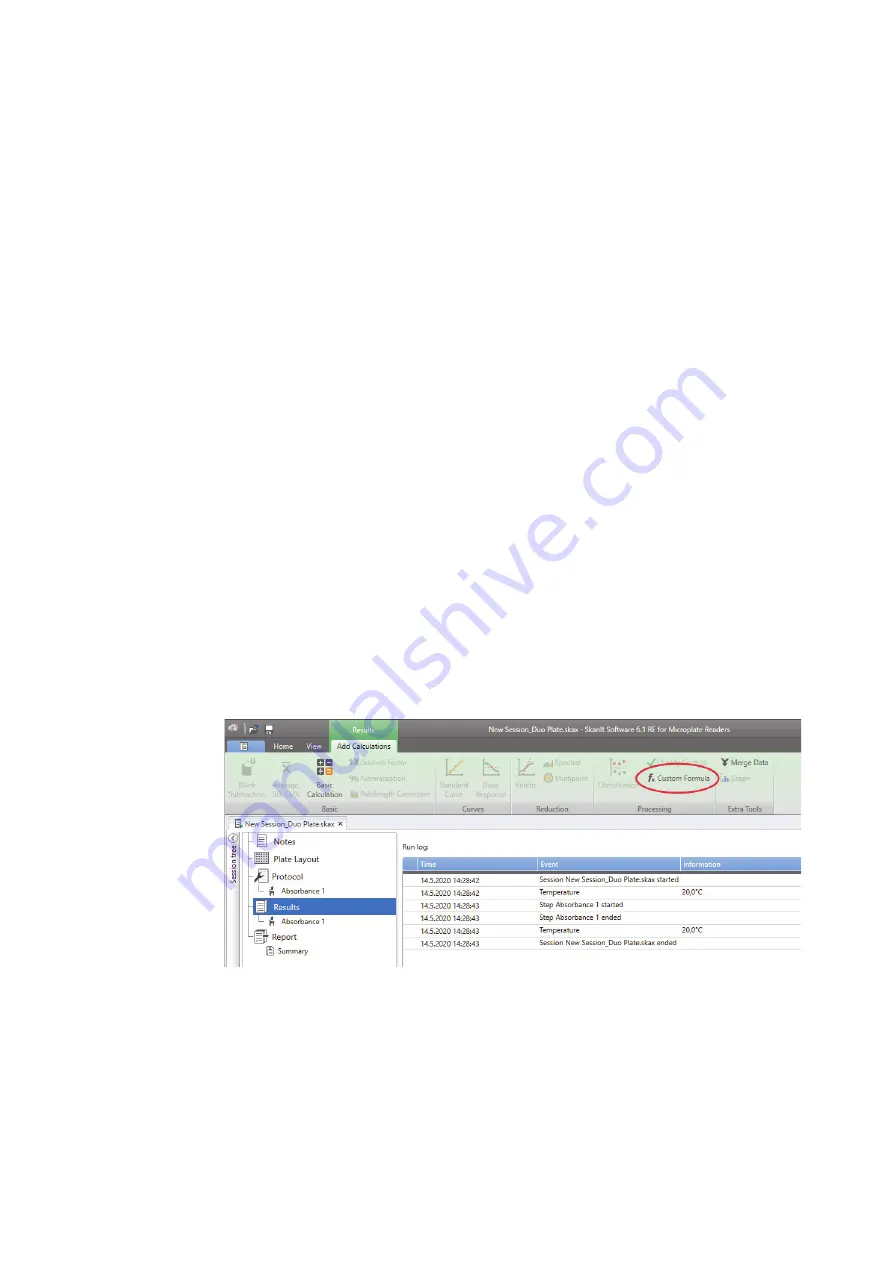
2
Low-volume measurements with SkanIt Software
Creating a new measurement session
Thermo Fisher Scientific
Thermo Scientific μDrop and μDrop Duo Plates User Manual
9
3. Results
All available calculation methods can be used similarly to normal microplate measurements.
For the μDrop Plate, the pathlength provided in the certificate (in cm) has to be used in the
Lambert-Beer's equation to calculate the concentration of the target molecules.
For the μDrop Duo Plate, two pathlengths are provided (one for each 2x8 matrix), and these
values need to be separately used in the calculations for the unknown samples located in each
matrix.
For example, for calculations of the dsDNA concentrations (μg/mL), the following formula is
used:
c=(A260-A320)*((50 μg/ml)/PATHLENGTH_CM)
where:
c = dsDNA concentration in μg/mL
A260 = absorbance value at 260 nm after blank subtraction
A320 = absorbance value at 320 nm after blank subtraction
PATHLENGTH_CM = pathlength value of the μDrop Plate in cm
For the μDrop Duo Plate, if different pathlengths are reported for each 2 x 8 matrix, then two
separate calculations of concentrations need to be carried out. To accomplish that, two different
sample groups can be, for instance, created in SkanIt Software (one group for each 2 x 8 matrix).
The calculation is then performed separately for each group (2 x 8 matrix side), with the
corresponding pathlength value.
To add the equation, click
Results > Custom Formula
).
Figure 10.
Custom Formula
For more details about SkanIt Software, refer to the T
hermo Scientific™ SkanIt™ Software for
Microplate Readers Technical Manual
(Cat. no. N16046).
Blanks
Each measurement should contain a blank subtraction. It is recommended to use at least one blank
sample in each measurement. There are different ways to perform the blank subtraction:
• Blanks on the same μDrop or μDrop Duo Plate
















































